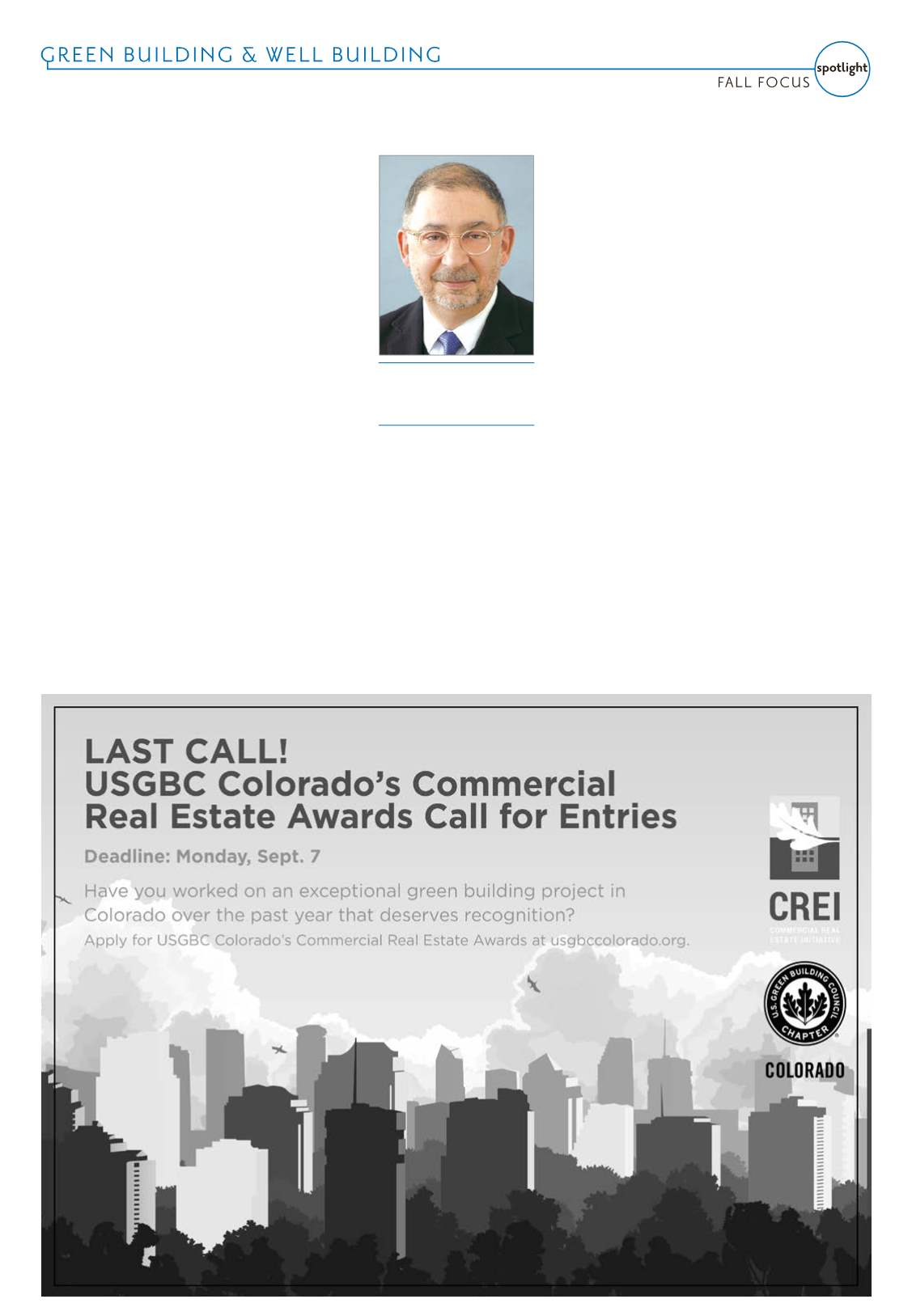
September 2-September 15, 2015
—
COLORADO REAL ESTATE JOURNAL
— Page 19B
A
s we advance toward a
more energy-efficient
built environment,
building owners are seeking
guidance on how to maximize
the energy performance of
their buildings. Many owners
are concerned about the
cost and effectiveness of the
tools necessary to achieve this
goal, but tools such as the
Retrofit Savings Estimator help
streamline the energy analysis
process.
The RSE is a common sense
tool with a deep technical
backbone that anyone can
use to scope out deep energy
retrofits for existing buildings.
This innovation built on an
established energy-modeling
platform makes expert analyses
accessible to building owners
and design communities
without requiring expertise
in building energy models
or performing data analytics.
Owners can now weigh options
and choose strategies to
optimize energy savings, even if
they don’t yet know how each
component of their building
contributes to the cost of
operation. Anyone can target
energy savings opportunities
for individual buildings or
help to select projects from a
portfolio of buildings based on
solid analytics.
The RSE is a free, online
resource offered by New
Buildings Institute, a
nonprofit organization
working to improve the energy
performance of commercial
buildings. In researching and
conceptualizing the RSE, NBI
looked at reasons why building
owners struggle to make
efficiency investments. In many
cases, owners are confronted
with anecdotal claims about
efficiency improvements that
lack a reliable context for
their building retrofit project.
This intuitively raises doubts
about where to begin. The RSE
provides the missing context
based on a simple description
of the existing building, its
location and its use. The
RSE’s results are presented
in ranked order showing
energy improvement measures
with the magnitude of each
measure’s relative effectiveness.
The tool is easy and
customizable. There are 11
building types to choose from,
including offices, retail, clinics,
warehouses, supermarkets
and schools. To get started,
a user needs basic building
data: total building area,
type, year of construction and
generalized type of heating
and cooling equipment. There
is no need to know numerical
values or equipment specs.
For any information that may
be missing at the outset, there
are built-in, reliable default
assumptions. The underlying
software uses context sensitive,
field-verified algorithms
developed during 20 years
of modeling and consulting
experience. These functions
extend the basic building
inputs and create standard,
nonproprietary DOE-2 energy
models in real time.
The RSE identifies a set of
the most impactful measures
based on basic building
characteristics and calculates
potential energy savings
associated with those upgrades.
Hundreds of custom energy
simulations examine the effect
of alternative energy-saving
measures, allowing users to
consider how much energy
can be saved by implementing
individual or sets of energy-
savings measures. The tool also
expresses the percent of energy
saved compared with current
usage. Users can experiment
with subsets of recommended
measures to determine the
impact of alternatives.
Once users have scoped out
their opportunities, they can
print the results and use them
to compare multiple buildings
in a portfolio to prioritize
retrofit opportunities, define
the scope of potential projects
and determine the savings
potential from deep energy
retrofit projects. There are
two stages to the process. After
entering basic information,
data is sent via the Web to
a server where 35 custom
energy simulation models are
evaluated in about a minute by
The RSE software to test each
specific building’s sensitivity
to certain improvements.
For example, if the potential
energy impact of adding
insulation to the roof is only
1 or 2 percent, the tool may
ignore that measure in favor of
strategies saving more energy.
This first step means that you
never have to answer questions
that aren’t directly relevant
to the most impactful retrofit
strategies.
After the first round of
calculations, the RSE presents
the second round of questions
that focus on four to seven
key measures with the highest
potential value to the owner.
The questions are at a level
of detail that most building
owners or managers can
readily answer. These questions
help the RSE refine the energy
savings impacts of specific
improvements. For example, if
one measure being considered
is adding roof insulation, it’s
helpful to know how long the
current roof has been on the
building, so there is an idea of
how much insulation is already
there. And, if the user knows
more about their building like
the solar heat gain coefficient
for their windows, or the
specific U-value of the roof
assembly, there is a detailed
inputs screen for those who
can get more specific.
With basic information about
the building and particular
measures, the RSE builds
and runs hundreds of custom
energy simulations in seconds
to investigate the effect of
the selected energy saving
measures individually and in
groups. This allows users to
consider interactive effects
between different measures.
For example, installing higher-
efficiency lighting can reduce
the cooling load by decreasing
the heat from light fixtures.
Mixing and matching measures
lets users scope impacts that
work for them.
Try it out by visiting: www.
newbuildings.org/retrofit-
savings-estimator.
David A. Eijadi, FAIA
Principal, The Weidt Group,
Minnetonka, Minnesota


